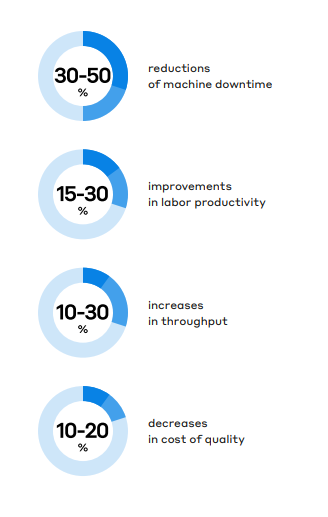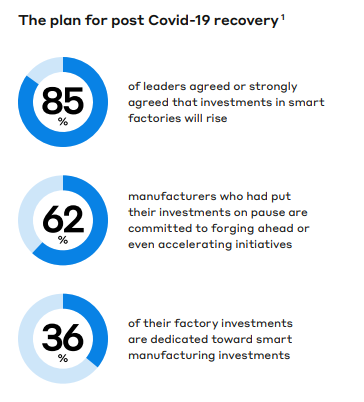
Let’s start with the two elephants in the room that have manufacturing leaders on the fence about digital transformation: What to do with legacy ERP systems and How to know where to start. While every manufacturing organization operating today is different and has their own legacy ERP system, they all face a common challenge—the path to profitability is lined with connected technology, data, and unified operations for access to real-time insights across processes, partners, products, and people.
Manufacturers that have spent the last decade investing in technology and digital tools have simultaneously added layers of complexity to already disconnected systems and processes. The need to invest in modern, unifying ERP technology is fundamental to growth in a digitally connected world, and the time is now. Aside from implementing new technology, this also means stepping away from traditional ways of doing things and adopting a more holistic approach toward factory digitalization.
Navigating disruption and accelerating change in the new and next normal
While the manufacturing industry has been playing catch-up in terms of digital transformation for several years, the impact of Covid-19 either accelerated digital transformation initiatives or stopped them dead in their tracks. In addition, new industry trends and challenges have emerged such as supply chain disruptions and labor shortages.
Manufacturers with modern technology and an integrated digital ecosystem were able to rapidly pivot and adapt to unforeseen product and service demand. On the other hand, many who had started the process had to pause due to budget cuts and reprioritized resources. In all cases, moving forward means digitizing at speed and scale. As industries start to recover from the impact of a global pandemic, manufacturers must be prepared to adapt and respond to new sources of supply as well as shifting customer demands. Implementing innovative cloud technology now will give manufacturers the resilience and flexibility needed to speed up recovery and proactively navigate the new and next normal after the coronavirus crisis.
Source: Deloitte
Connecting the old with the new
The migration to digital transformation does not mean starting with a blank slate. As new technology transforms manufacturing into a highly connected, intelligent, and more productive industry, businesses can enhance their legacy systems to keep up with new and increasingly sophisticated technologies. Integrating “dumb” machines with “smart” machines starts with enabling data collection from those legacy machines.
Technology is transforming discrete manufacturing into smart factories that are propelling Industry 4.0. Not only by bringing in automation and intelligence to boost productivity and decrease costs, but also by empowering and retaining skilled labor, streamlining the supply chain, and enabling product innovation.
Manufacturers are gradually retrofitting existing equipment with smart sensors that collect comprehensive data in real-time. This data can then be passed to execution, production planning, and ERP solutions to provide unified and robust visibility into performance as the backbone of factory digitalization.
Unify operations for real-time visibility across the organization
- Gain real-time insights into the entire production process
- Deliver maximum value and quality to customers
- Increase profitability
- Reduce errors and waste
Meet customer expectations with proactive service
- Measure customer satisfaction metrics with specific products
- Determine growth demand in certain geographies
- Ensure that the supply chain is optimized to fulfill that demand
Take control of the manufacturing lines to transform products
- Maintain real-time quality as products are being produced
- Make changes on the fly if there are issues
- Increase margins and reduce waste
Retain and empower a motivated workforce
- Collaborate and share insights to improve productivity
- Create a more connected and effective organization
- Proactively manage operations with predictive analytics
.
Unlock value and ROI with a unified vision
Discrete manufacturing is a uniquely complex industry that’s very nature relies on assembling products from many parts, often across multiple locations, using different processes by varying levels of human input and output. The need to build a unified ecosystem as the backbone for a resilient organization is obvious and can be lucrative.
In a recent report by McKinsey, leading manufacturers that are digitally transforming to develop new or enhanced ways of operating their business for Industry 4.0 are experiencing significant benefits and securing their place in the next normal.

Where to start on the journey toward factory digitalization
With a legacy ERP system that is not fully integrated with business management systems, transformative change is impossible. Modern infrastructure in the cloud with business applications and ERP is the foundation for resiliency as new and next technologies emerge for intelligence and automation.
If your organization has no digital strategy or is taking an ad-hoc approach to digitization, it will become increasingly unmanageable to optimize operations, meet new customer expectations, and navigate a disrupted supply chain and evolving landscape.
With the future driven by intelligent automation, technology solutions are more readily available to increase productivity, decrease costs in manufacturing, and change the way to work and interact with suppliers, partners, customers, and employees on a global scale. Manufacturers that are set up to adapt and transform business models towards more digital revenue streams over the next decade will have the best chance of survival.



![[eBook] Implementing a modern ERP for resilient manufacturing](/contentassets/afedf36cdc0c46c1ba75d7070801ea32/ebook-resilient-manufacturing-erp.jpg?width=1366&format=jpg)